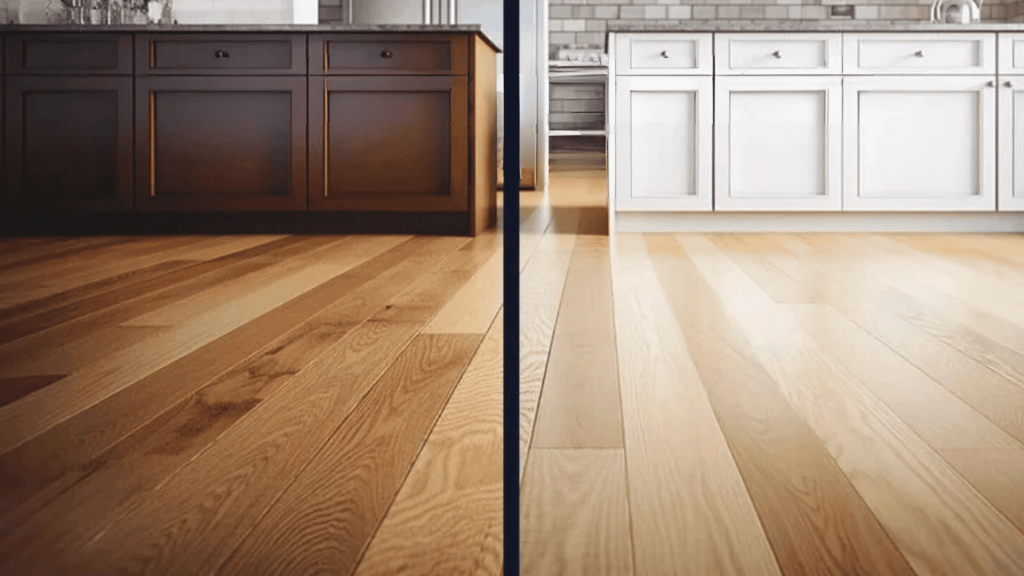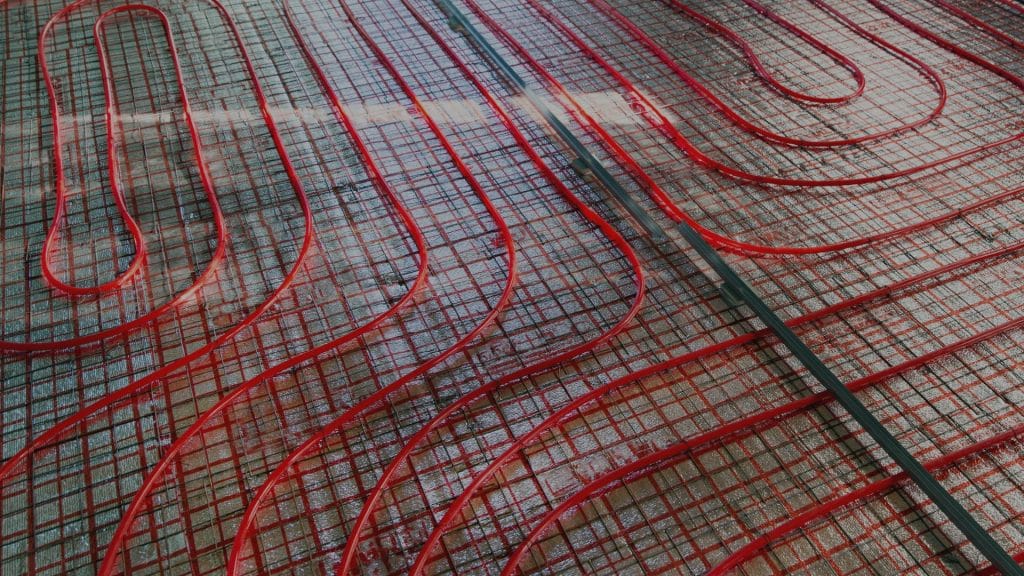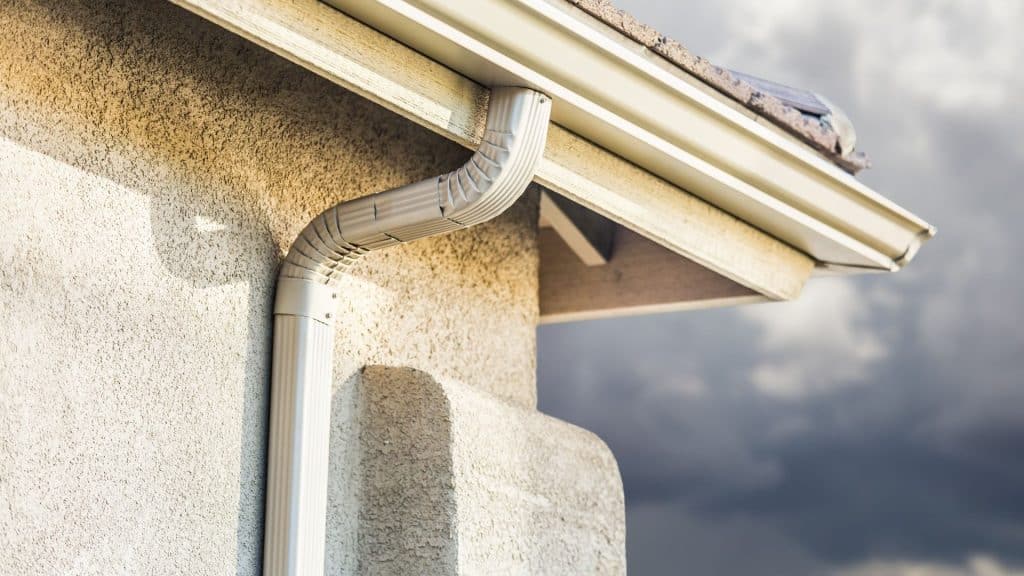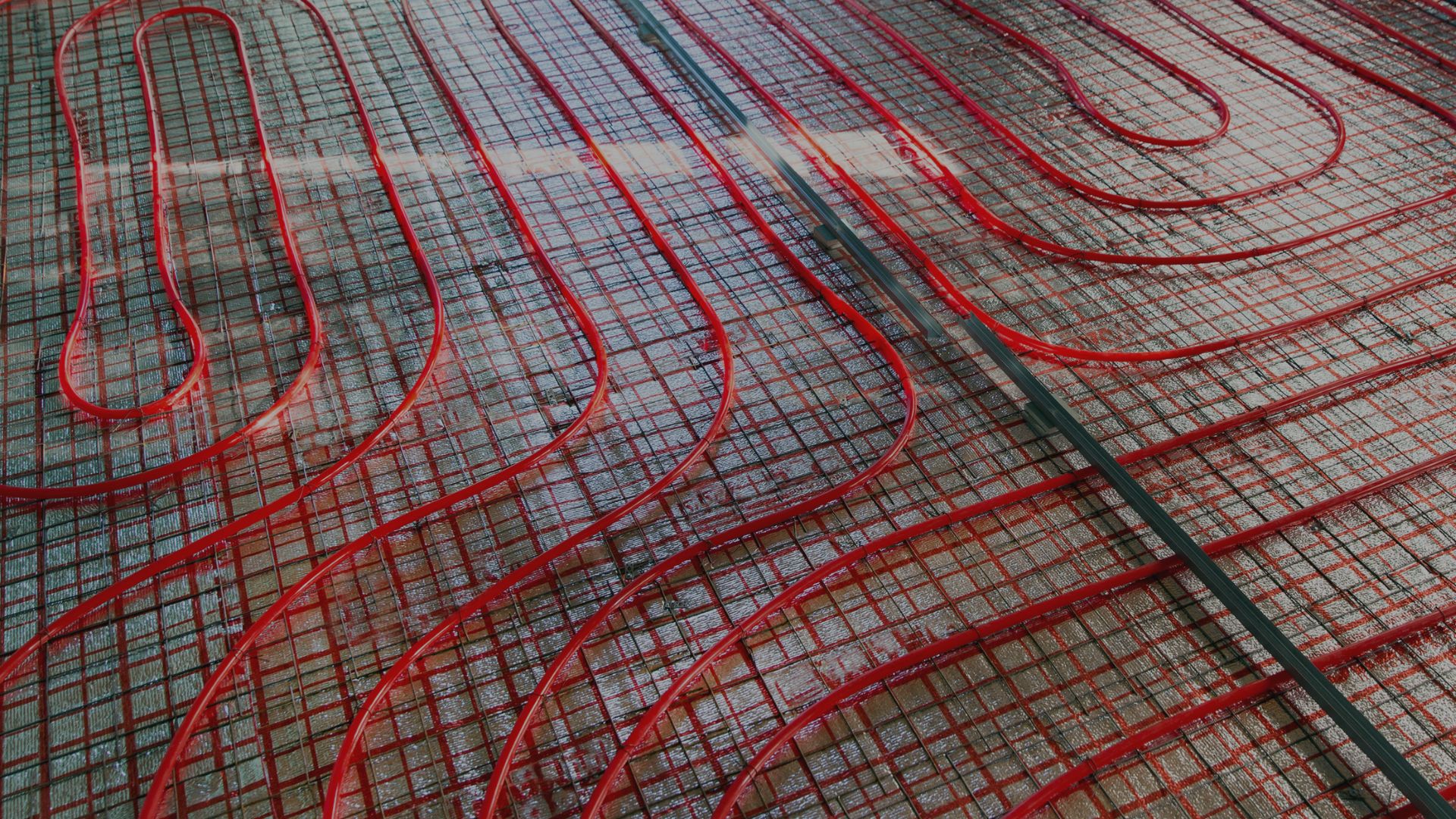Your hardwood flooring choice defines your home for decades. It influences how each room looks, feels, and holds up to daily life.
For many residents, the real challenge lies in deciding between two classic red oaks and white oaks. At first glance, they look similar, but their performance, tone, and durability set them apart.
The right choice can give your home long-lasting comfort and timeless charm. The wrong one may leave you dealing with wear and regret down the line.
Let’s walk you through everything that matters from color and grain to cost, maintenance, and value so you can confidently choose the oak flooring that best fits your lifestyle, budget, and style.
Basics of Oak Flooring Species
Both red oak and white oak are native to North America and are among the most popular hardwood flooring choices.
Each offers strength, timeless beauty, and the ability to be refinished multiple times, making oak a reliable investment for any home.
Red oak is slightly softer, scoring about 1,290 on the Janka hardness scale. It’s known for its reddish undertones and strong, open grain pattern.
White oak rates a bit higher at 1,360, making it more resistant to dents and moisture thanks to its tighter grain and closed pores.
While both species share durability and versatility, the small differences in grain, tone, and hardness can change how your space feels and performs over time.
Red Oak Flooring
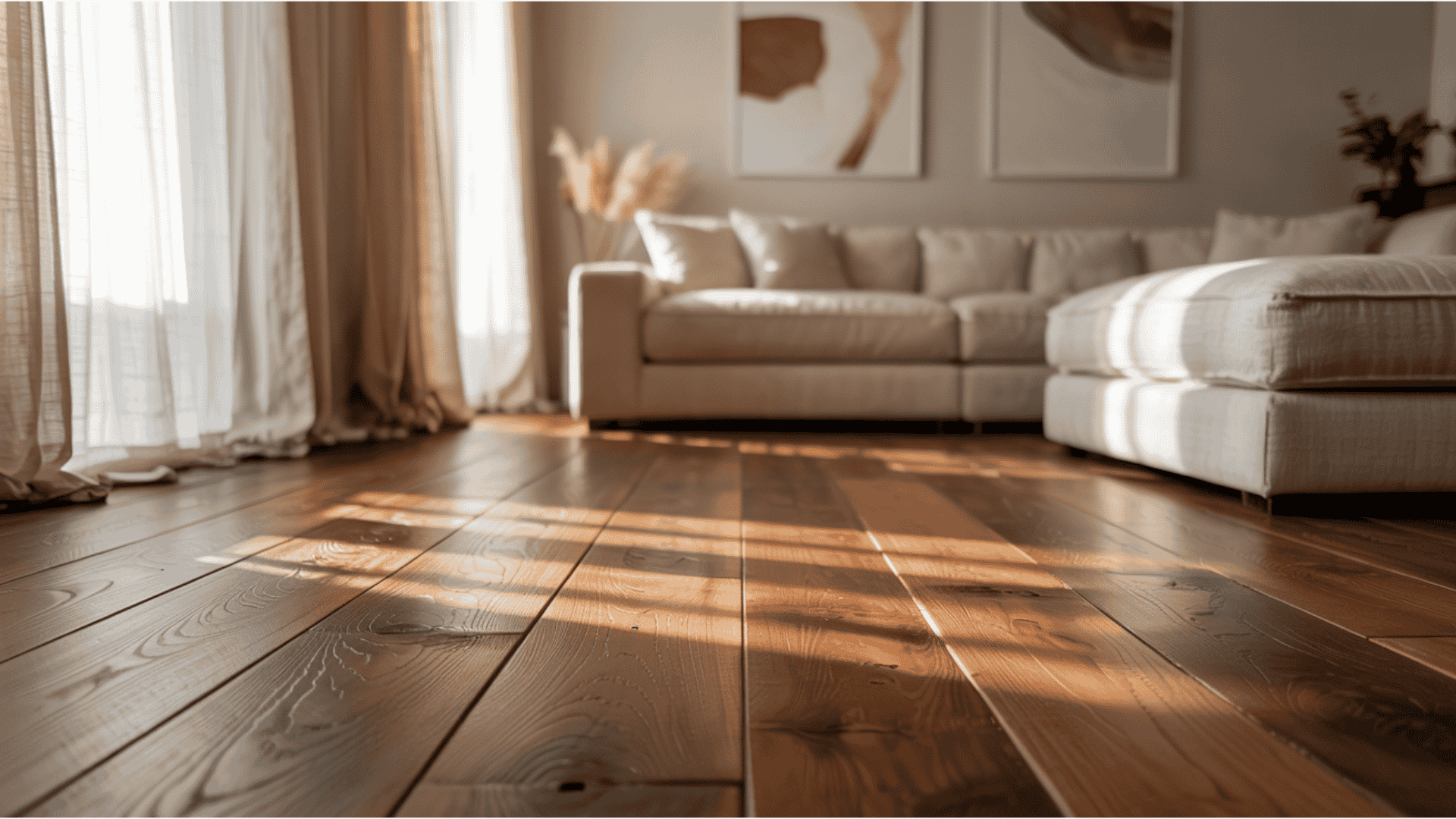
Red oak has warm undertones ranging from pinkish hues to golden reds. Its grain is open and pronounced, giving rooms a lively, textured look. The wood accepts stains easily, often amplifying its natural warmth.
On the Janka hardness scale, it’s moderately strong and durable enough for most homes, but slightly softer than white oak. Its open grain means it’s less resistant to moisture, so it performs best in dry, temperature-controlled spaces.
Ideal Design Styles and Spaces:
- Complements traditional, farmhouse, and rustic interiors.
- Pairs well with warm color palettes and classic furniture.
- Enhances cozy lighting and inviting atmospheres.
- Commonly used in living rooms, dining rooms, and bedrooms.
- Ideal for spaces where warmth and character are key.
Pros and Cons of Read Oak Flooring
| Pros | Cons |
|---|---|
| Warm, Classic Color with Strong Grain | Less Moisture-Resistant |
| Easy to Stain and Customize | Grain Can Look Busy with Dark Stains |
| Affordable and Widely Available | Softer, Prone to Small Dents |
| Great for Traditional and Rustic Styles | Needs Care in Humid Areas |
Overall, red oak brings timeless charm and warmth to any home, making it a perfect choice if you value character, comfort, and classic appeal.
White Oak Flooring
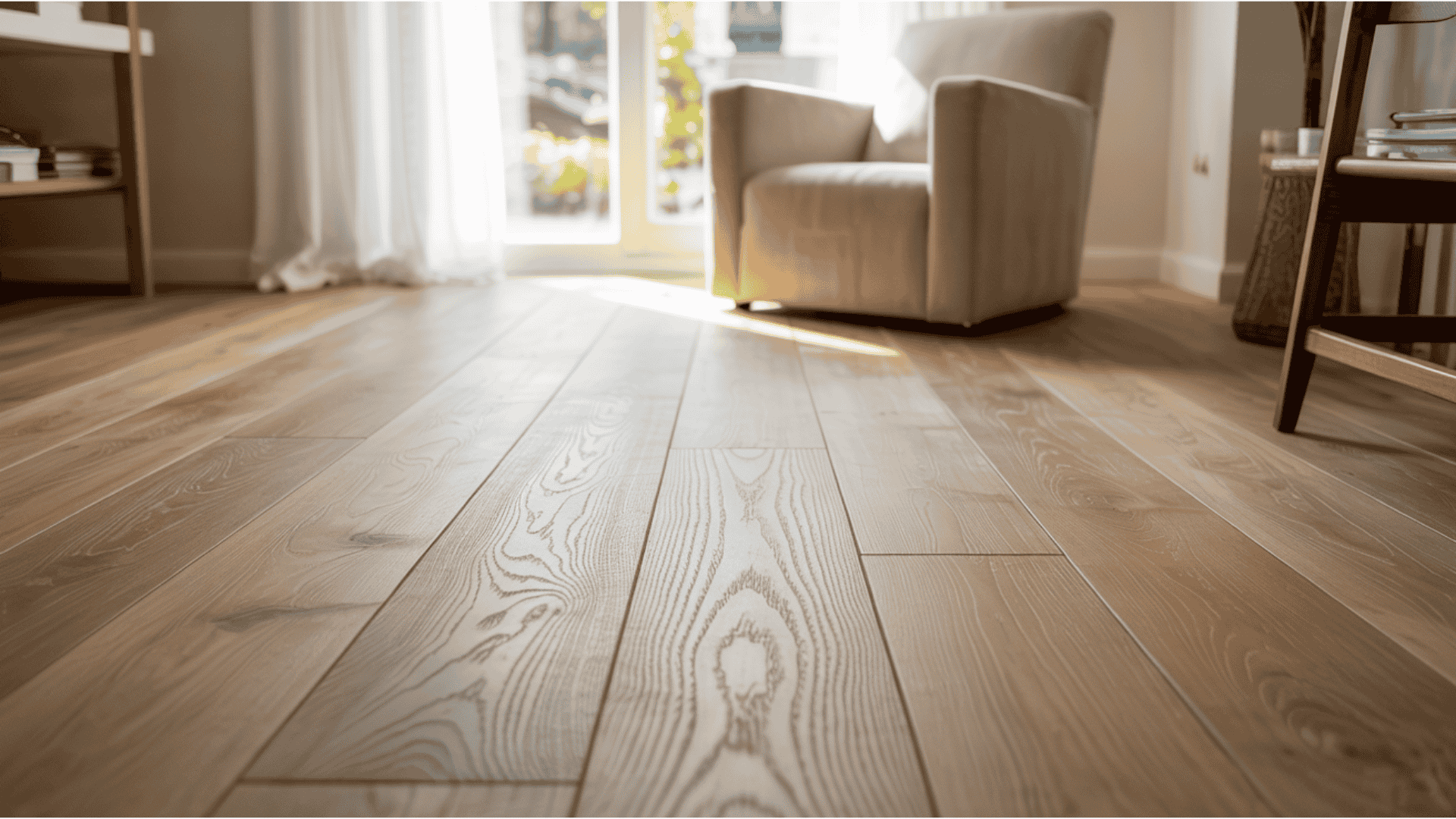
White oak has a smoother, tighter grain and natural beige-to-gray undertones. Its closed pores make it more resistant to water and humidity. Ideal for kitchens, hallways, and entryways.
Its hardness rating of 1,360 gives it better wear resistance, and it accepts stains evenly for a modern, neutral appearance. Because of its minimal grain contrast, it delivers a refined, cohesive look.
Ideal Design Styles and Spaces:
- Complements modern, Scandinavian, and transitional designs.
- Works well with clean lines and open layouts.
- Enhances light, airy, and minimalist spaces.
- Ideal for humid climates and high-traffic areas.
Pros and Cons of White Oak Flooring
If you prefer a sleek, modern look with durability that handles humidity and wear, white oak is a top contender.
| Pros | Cons |
|---|---|
| Excellent resistance to moisture and wear | Typically 15–25% more expensive |
| Neutral tone pairs with both warm and cool palettes | May appear cooler or washed out in certain lighting |
| Tight, even grain for a refined, modern look | Limited availability in wider or specialty cuts |
White oak offers a timeless yet contemporary edge perfect for residents seeking durability, subtle grain, and versatile style.
Key Differences Between Red Oak and White Oak
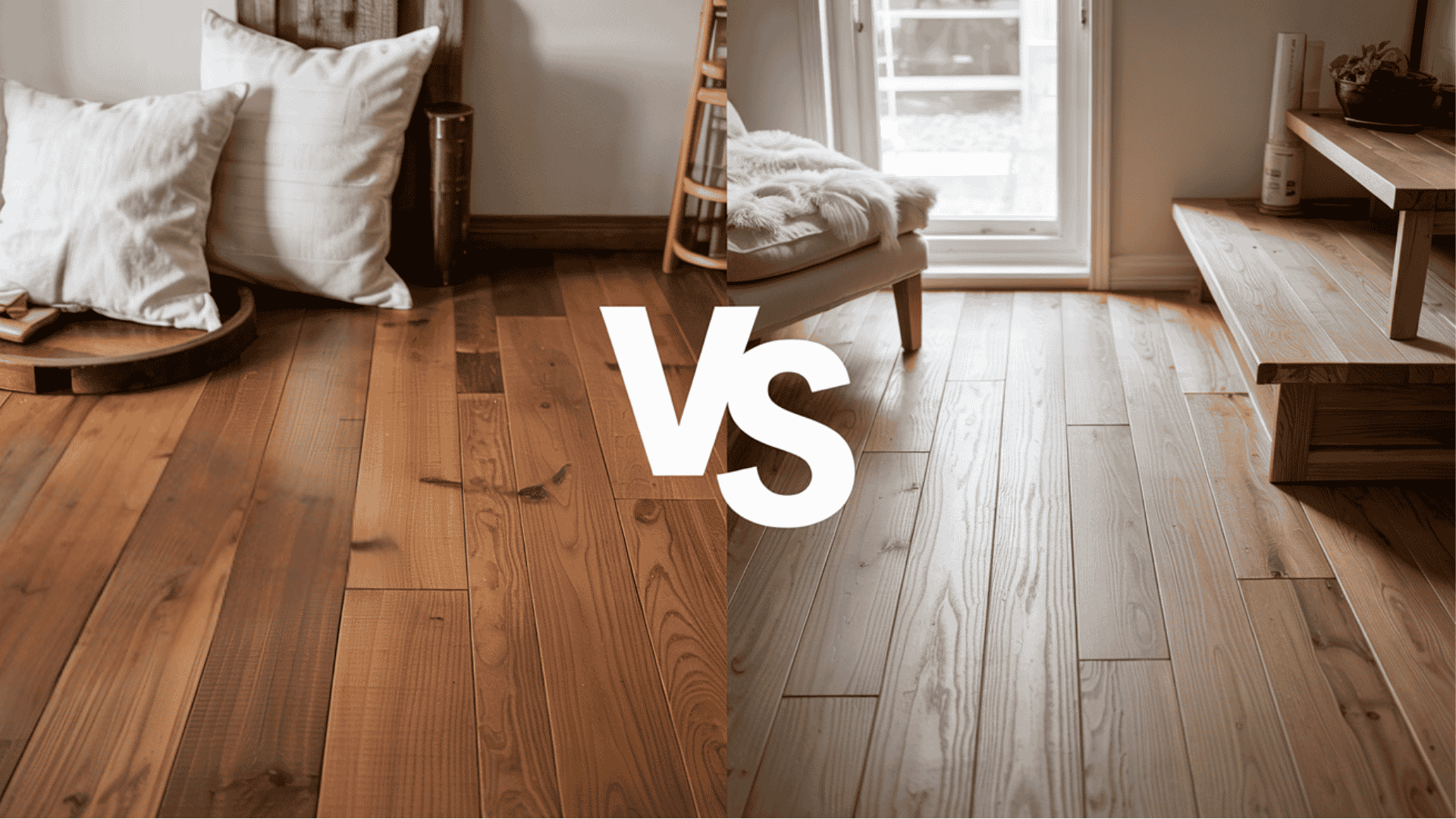
While both are strong, beautiful, and long-lasting hardwoods, their subtle differences in tone, grain, and durability can completely change how your floors look and perform. Here’s how they compare side by side:
1. Color & Tone
- White Oak: Naturally beige to light brown with soft gray undertones, it creates a modern and neutral foundation that complements both cool and warm color palettes beautifully.
- Red Oak: Known for its warm pinkish to golden hues, it brings richness and inviting warmth to interiors, enhancing traditional and cozy design styles with natural depth and glow.
2. Grain Pattern
- White Oak: Features a tight, straight, and subtle grain pattern that feels smooth and refined, perfect for homeowners who prefer minimal texture and a clean, contemporary appearance.
- Red Oak: Displays a bold, open grain with strong contrast and movement, adding visible character and dimension that suits rustic, farmhouse, or traditional spaces exceptionally well.
3. Hardness (Janka Rating)
- White Oak: Rated 1,360 on the Janka scale, it offers slightly better dent resistance and is ideal for busy households or rooms that experience regular foot traffic.
- Red Oak: Scoring 1,290, it’s only slightly softer yet still highly durable. Its flexibility makes refinishing easier and ideal for most family living spaces.
4. Moisture Resistance
- White Oak: Its closed grain provides strong resistance to moisture and humidity, making it excellent for kitchens, hallways, and homes in damp or coastal regions.
- Red Oak: The open pores absorb moisture more easily, so it performs best in temperature-controlled interiors away from heavy humidity or direct water exposure.
5. Staining Behavior
- White Oak: Takes stain evenly, maintaining a balanced, neutral tone ideal for light or gray finishes, often favored in modern or Scandinavian interiors.
- Red Oak: Absorbs stain deeply and warmly, enriching its reddish undertones. It works beautifully with medium- to dark-finished wood, highlighting its grain contrast and warmth.
6. Design Fit
- White Oak: Suits modern, transitional, and minimalist spaces with its understated look and neutral color base, seamlessly blending with sleek lines and open layouts.
- Red Oak: Complements classic, vintage, or rustic designs where texture, color warmth, and traditional charm play a key role in creating inviting, timeless interiors.
White oak offers a sleek, durable surface perfect for contemporary living, while red oak brings warmth and classic character that never goes out of style.
Comparing Red Oak and White Oak: Cost & Longevity
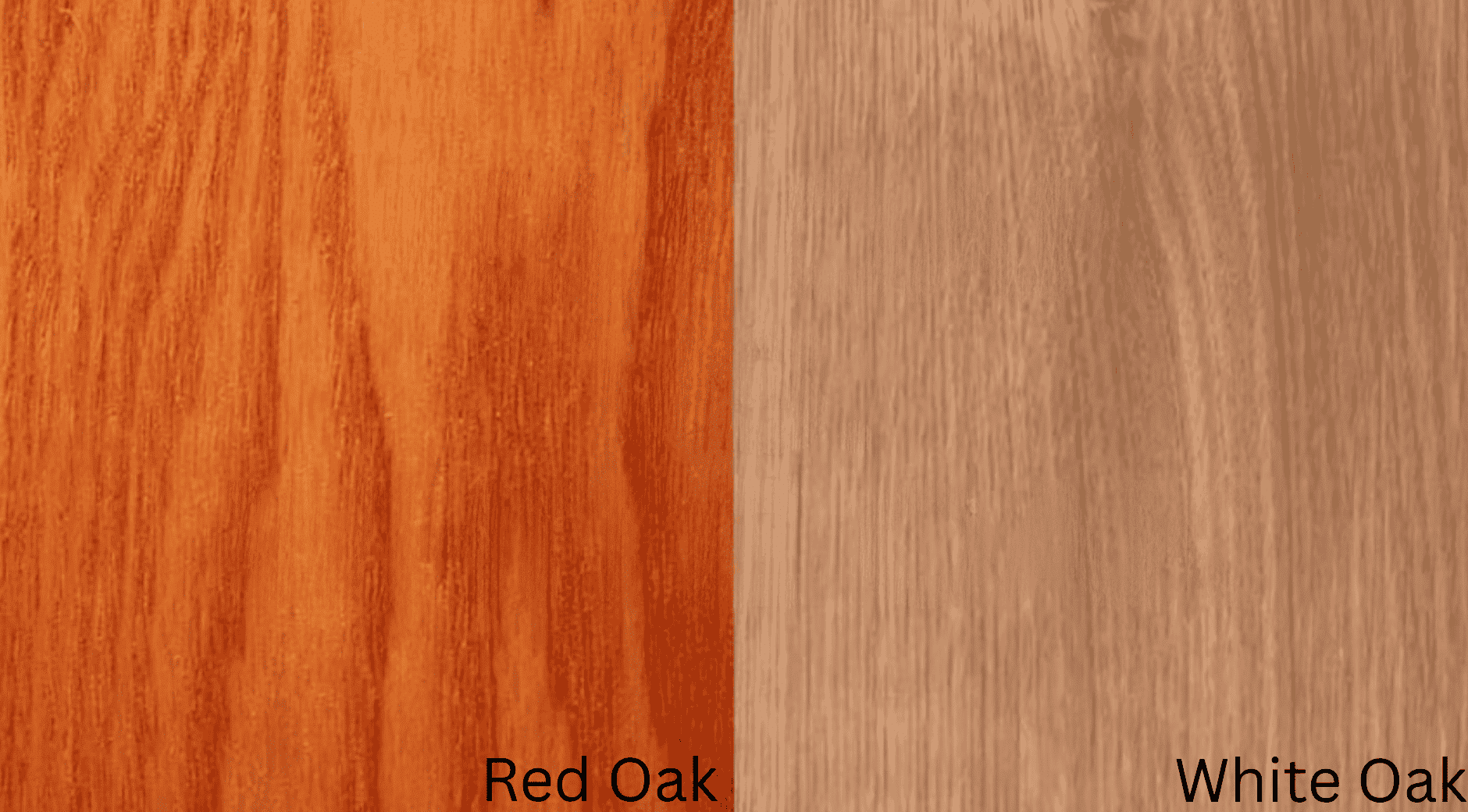
When comparing red oak and white oak, cost and long-term value often become the deciding factors. While both are smart investments, their pricing and performance over time differ slightly.
| Factor | Red Oak | White Oak |
|---|---|---|
| Material Cost | $4–$8 per Sq. Ft. | $6–$12 per Sq. Ft. |
| Installation Cost | Comparable for Both | Comparable for Both |
| Maintenance | Regular Refinishing Needed | Lower Upkeep, Better Moisture Resistance |
| Availability | Readily Available Nationwide | Slightly Less Common in Some Regions |
| Resale Value | Increases Home Value | Slightly Higher Resale Appeal |
| Overall Value | Affordable and Timeless | Premium and Long-Lasting |
When comparing red oak and white oak, cost and long-term value often become the deciding factors. While both are smart investments, their pricing and performance over time differ slightly.
Oak Flooring Variations
Beyond color and grain, the way your oak flooring is cut, graded, and finished can dramatically change its look, performance, and longevity. Here’s how these variations make a difference.
- Grades: Oak flooring grades range from clean and consistent (Select and Better) to more natural and rustic (Character Grade), letting you choose between a polished look or visible knots and color variation.
- Cuts: Different cuts, plain-sawn, quarter-sawn, and rift-sawn, affect grain pattern and stability. Quarter- and rift-sawn planks show straighter lines, while plain-sawn planks offer the classic cathedral grain look.
- Formats: Solid oak flooring can be sanded and refinished multiple times, ideal for longevity. Engineered oak offers layered stability, making it better for basements, humid rooms, or uneven subfloors.
- Finishes: Matte, satin, and oil finishes each highlight oak’s texture differently. Lighter matte stains suit modern white oak floors, while richer satin tones enhance red oak’s traditional warmth.
No matter which combination you choose, understanding these variations helps you tailor your oak flooring to your home’s style, durability needs, and maintenance preferences for lasting beauty and value.
Maintenance and Care Tips For Red and White Oak
Proper care keeps your oak floors looking beautiful and lasting for decades. With a few simple habits and the right cleaning approach, you can protect your investment and preserve your flooring’s natural warmth and finish.
Tip 1: Clean with a Damp Microfiber Mop
Use a slightly damp microfiber mop to lift dust and dirt without scratching. Avoid excess water; it can seep into seams, cause swelling, and dull your oak’s finish, especially in moisture-prone spaces like entryways or kitchens.
Tip 2: Avoid Harsh Cleaners
Skip harsh or acidic cleaners that damage the finish and dry out the wood. Use pH-neutral hardwood floor solutions instead to protect the coating, maintain shine, and keep both red and white oak floors looking smooth and rich.
Tip 3: Refinish Every 8 to 10 Years
Plan to refinish your floors every eight to ten years to restore shine and remove surface wear. Refinishing helps smooth out scratches, refresh the color, and extend the lifespan of your oak flooring for long-term durability.
Tip 4: Use Rugs and Felt Pads
Add rugs in high-traffic areas and felt pads under furniture legs to prevent dents and scuffs. These small steps protect your oak’s surface, reduce friction, and keep your floors looking polished and well-maintained.
Tip 5: Control Humidity Levels
Keep indoor humidity between 35% and 55% to prevent shrinking or swelling. A humidifier or dehumidifier helps regulate moisture levels, reducing the risk of cupping, cracking, or gaps forming in your oak flooring.
White oak’s closed grain helps prevent water absorption, while red oak requires extra attention in humid rooms or near entryways.
Conclusion
Choosing between red oak and white oak flooring comes down to lifestyle, taste, and budget, not which is “better.” Red oak delivers warmth, character, and value that never goes out of style.
White oak provides sleek durability and timeless versatility for contemporary homes. Before making your final choice, view large samples under your own lighting and consider where they’ll be installed for the best visual match.
Both are durable, refinishable, and classic investments that enhance your home’s value and personality for decades to come. The best choice is the one that feels right for your space and complements your everyday living style.
Ready to decide? Visit a local flooring showroom or request samples to see how red and white oak transform your rooms before installation.

